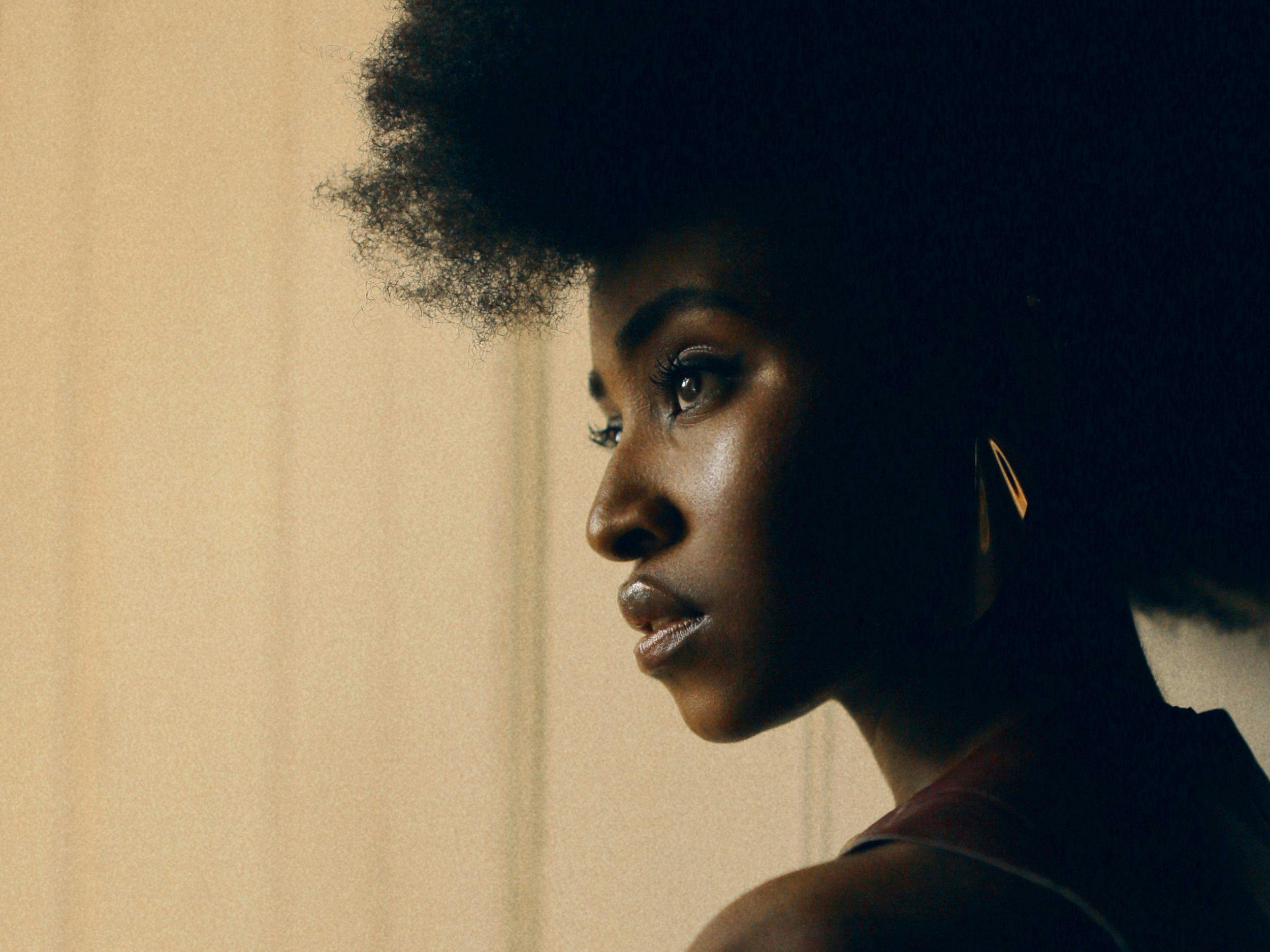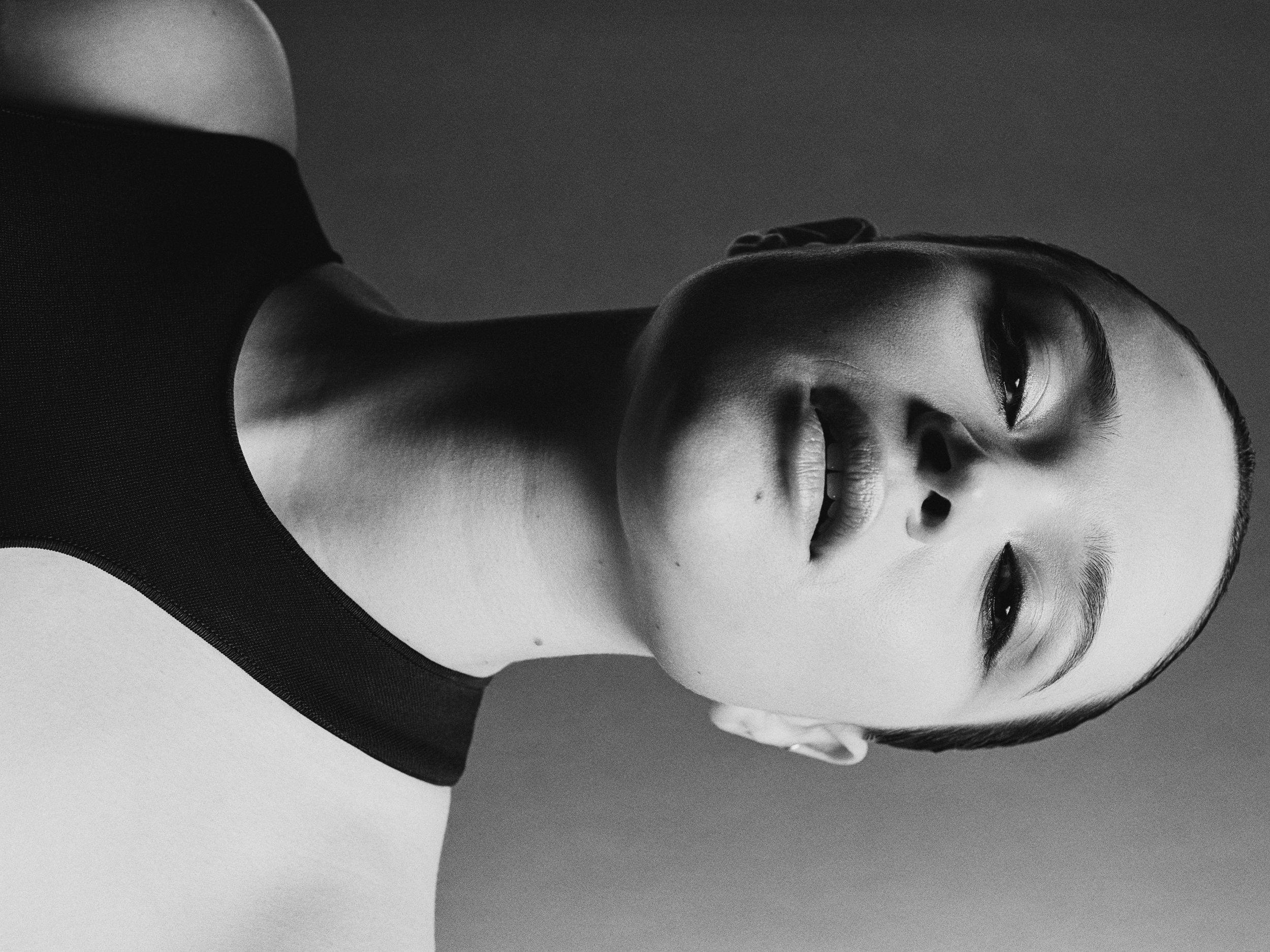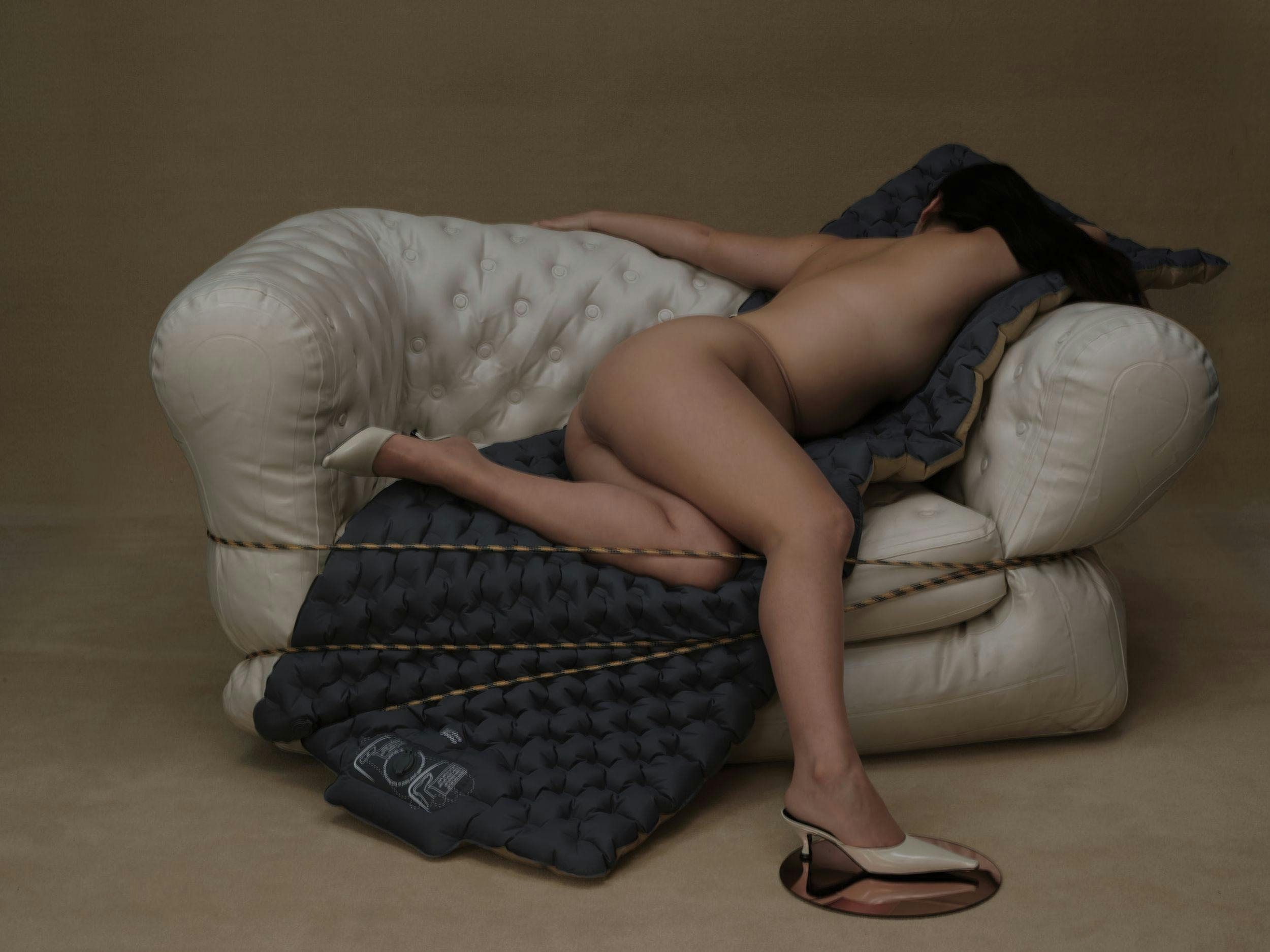
Vintage necklace, stylist’s own
Justin Peck’s American Visions
Few composers did as much to define the sound of twentieth-century America as Aaron Copland. Growing up in Brooklyn as the gay son of a Jewish Lithuanian immigrant, he had little exposure to the vast plains and deserts of the West, yet his music has become almost an ingrained national soundtrack for its sweeping landscapes, instantly calling to mind cowboys, campfires, and hoedowns. For the choreographer Justin Peck, this dichotomy, uniquely American in the way it fuses Copland’s lived experience with a sense of idealism, was exactly what inspired him to create Copland Dance Episodes, his latest work for New York City Ballet, where he also serves as resident choreographer and artistic advisor. “One of the things that really gave me the courage to do this project was when I was researching Copland, he said that ’you want to put down in some form what it feels like to be alive right now today and that’s what I do with my music,’“ he says, paraphrasing. “It’s like, ’I’m trying to capture the essence of a moment,’ and I felt like that was the mantra for this piece. The fact that he thinks that way about artmaking was the exact kind of encouragement needed to take this music and explore it with dancers of today, with artists of today.“

All clothing by Hermès
Copland Dance Episodes, which premiered in January and helps close out City Ballet’s spring season this week, is an experiment of sorts for the company, its first evening-length non-narrative work since the 1967 landmark Jewels and the rare program to be presented without intermission. Peck, who has created work to Caroline Shaw’s Pulitzer-winning a cappella composition Partita for 8 Voices and collaborated on costumes with Opening Ceremony’s Humberto Leon, is no stranger to such innovation, and he says that creating Copland Dance Episodes, easily the most ambitious project in his decade-plus career as a dance maker, offered him the opportunity to rethink how the art form is presented in a fast-paced world. “It’s part of how we take in art and culture nowadays,“ he explains. “There’s something really satisfying about sitting down and experiencing something for ninety minutes and then it being over and being able to talk about it, go to dinner, have the rest of an evening. It has to do with the rhythm of what it means to live today, so I wanted to create something that worked in that way for the ballet.“

All clothing by Alexander McQueen
With a cast of dozens, Copland Dance Episodes runs through twenty-two titled segments (Peck likens the collection to an album of songs or a season of a streaming series) set to Copland’s iconic compositions Billy the Kid, Rodeo, and Appalachian Spring, three dance scores from 1938-1944. The resulting ballets, by Eugene Loring, Agnes de Mille, and Martha Graham, respectively, remain popular to this day, and Peck says he was inspired to reconsider this music with such a robust legacy while watching American Ballet Theatre perform de Mille’s Rodeo several years ago. “I was so viscerally moved by hearing the music and experiencing that music live,“ he recalls. “I remember sitting super close to the orchestra, I was in the third or fourth row by the percussion section, and I could feel the physical vibrations against my skin. I just thought the music was so alive and that there was potential to do something with it that doesn’t erase what Agnes de Mille did, but actually is a whole entirely different interpretation or exploration of that music.“
Peck’s Rōdē,ō: Four Dance Episodes, with phonetic notations to distinguish it from the earlier work, which is pronounced like the drive in Beverly Hills, premiered at City Ballet in 2015 to a rapturous response, winning a Bessie Award for outstanding production. “There’s something about that piece when it’s performed, so much of it is about the energy that it brings out of the audience and that exchange,“ he explains of the work, which has been revived several times in the years since. “It’s something that I can’t quite articulate, but there’s this collective energy that’s beyond just the dancers and what they’re performing. It’s that live theater engagement that you hope for.“

All clothing by Dion Lee
When he decided to expand upon Rōdē,ō, he set parameters to challenge himself and help shape the ballet’s development, which is abstract but traces the contrasting paths of two couples, one which comes together and one which grows apart. He mirrored the gender composition of Rōdē,ō, with its lead ballerina and fifteen male dancers, for Appalachian Spring, and established two connected trios who mix and match in a demonstration of Peck’s talents with masterfully orchestrating groups. “It’s those opposing developments in the relationships that I thought would be interesting to explore,“ he says, “and also good balance for one another so that the ballet didn’t feel too sincere or too jaded.“

All clothing by Raf Simons
As Peck’s ideas solidified over the past few years, he turned to the Choctaw-Cherokee painter Jeffrey Gibson for the set design, which features two multicolored drop curtains, one which greets audiences as they enter the theater and one which ends the piece. The dancing itself takes place on a bare stage, allowing Gibson’s creations to establish the palette, which is reflected in Ellen Warren’s spare two-tone costumes, and offer a powerful first and last impression. “It’s sort of terrifying for me, but we wanted the piece to just be presented against a blank white space and not have to rely on any smoke and mirrors of design to make it something more than what it was,“ Peck explains. “Part of what I was doing with this is stripping away all the heavy design and narrative and costuming to just focus on the music and the dance expression. It felt really appropriate and aligned to have a white canvas for this to exist against. Jeffrey’s work was all about how it ushers us into that world and then how we exit that world.“
Peck had been trading ideas with Gibson since before the pandemic, and the artist’s Native American heritage echoes both the expansive and inclusive vision of the United States originally expressed in Copland’s compositions and the larger project that Peck is pursuing in his own choreographic work and his leadership role at City Ballet. “The fact that Jeffrey Gibson is of Native American descent says a lot without having to say anything,“ Peck explains. “Just the fact that someone like that is included in the making of something this important is huge because that wasn’t the case with any of those original ballets. Things like that make us think hopefully about the progress of this country.“

All clothing and boots by Raf Simons. Scarf by A--Company.
As an artistic advisor to one of the world’s leading ballet companies, Peck says that he is fortunate to be able to play a small role in helping expand its scope and welcome new voices to a conversation that has been dominated by white men for centuries. “Ballet is such an archaic art form in a lot of ways. Sometimes even I feel like an outsider to it, even though I get to make so much within it,“ he says. “I think it’s slowly changing and very slowly improving but definitely not fast enough. I don’t feel like New York City Ballet necessarily reflects the city that we live in and it should—that’s a goal that I would hope to see sooner than later. It’s a complicated challenge because it’s not like, just hire a bunch of BIPOC people. It’s about making sure it’s done properly, it’s done in a way that sets these artists up for success and not just checking a box. There’s deep institutional work that needs to be done to change that.“

Top by Saint Laurent. Pants by A–Company. Boots by Raf Simons.
For Peck, who first joined City Ballet as an apprentice in 2006 and retired from performing to focus on his choreography in 2019, Copland Dance Episodes marks a turning point both in his career and for the company. After winning a Tony in 2018 for his work choreographing a revival of Rodgers and Hammerstein’s Carousel, he has been exploring the possibilities of musical theater, and is set to direct and choreograph another vision of America with Illinois, based on Sufjan Stevens’s landmark album with a story in collaboration with Pulitzer-winning playwright Jackie Sibblies Drury, which will first be seen next month at the Fisher Center at Bard. At his home company, many of the dancers with which he rose through the ranks have recently retired, or are about to, and they are passing the torch to the next generation, which he says holds plenty of promise for the future. In its celebration of community and cooperation, Peck’s latest work is also in some ways a reflection of the creative circle he has built for himself over the years. “It is this beautiful and strange and complicated point that the company is at, especially in relation to the time I’ve been there and the work I’ve been doing,“ he says, “so that also has felt really personal. I’m still processing that.“
Copland Dance Episodes continues tonight at New York City Ballet. Read this story and many more in print by ordering our sixth issue here.
As a nonprofit arts and culture publication dedicated to educating, inspiring, and uplifting creatives, Cero Magazine depends on your donations to create stories like these. Please support our work here.

All clothing by Hermès
As a nonprofit arts and culture publication dedicated to educating, inspiring, and uplifting creatives, Cero Magazine depends on your donations to create stories like these. Please support our work here.






